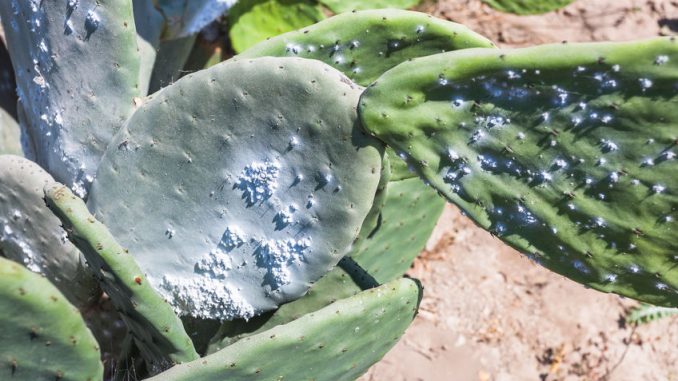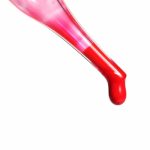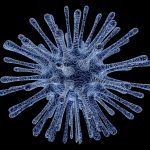
Carminic acid is the colour extracted from the dried female coccid insect Dactylopius coccus costa (Coccus cacti L.).
Carmine is the aluminium chelate of carminic acid. Cochineal describes the dried insects and also the colour derived from them. The colour has many names depending on the insect sources – Armenia red, kermes, Polish cochineal, lac dye and American cochineal. The Armenian and Polish cochineals are derived from Porphyrophora insect species.
Cochineal Red A is a synthetic colour and is known as Ponceau 4R and should not be confused with natural colours.
The colour was introduced to Europe following the Spanish conquest of South America. To all intents and purposes, American cochineal is the only viable commercial source available globally. There are some instances of Lac dye being used which comes from Laccifera lacca which is sourced from the Far East.
In labelling terms, carmine is also known as natural red 4, C.I. 75470 or E120.
Cochineal has been used for millenia. The colour is extracted from a number of coccid insects which are only found on the prickly pear which originally grew in Peru and other parts of South America. Some of it is now extracted from sources in the Canary islands and its not unusual to see farms on the island of Lanzarote.
Carminic acid
Carminic acid (with chemical formula C22H20O13) is a red crimson glycosylated anthraquinone compound. It is chemically identified as 1,3,4,6-tetrahydroxy-9,10-anthraquinone substituted by a methyl group at position 8, a carboxy group at position 7 and a 1,5-anhydro-D-glucitol moiety at position 2 via a C-glycosidic linkage.
Biosynthesis Of Carminic Acid
The production of carminic acid has still not been fully established but significant portions of it are known.
(1) Synthesis begins with either 8 molecules of malonyl-CoA or with 7 molecules of malonyl-CoA and a molecule of acetyl-CoA.
(2) The key enzyme required converts all these molecules into flavokermesic acid anthrone (FKA). The enzyme needed is polyketide synthase. The type of reaction is a Claisen condensation reaction. Various types of polyketide synthase (PKS) are probably needed.
(3) The anthrone FKA is converted to flavokermesic acid (FK). The conversion is either spontaneous or catalysed by an enzyme – a monooxygenase.
(4) Flavokermesic acid (FK) is either converted to kermesic acid (KA) via monooxygenase or to another compound dcII using C-glucosyltransferase.
(5) Both compounds are turned into carminic acid (CA) using either enzyme above except in a different order. i.e. The KA needs C-glucosyltransferase to produce CA or dcII requires the monooxygenase to produce CA.
Uses Of Carmine And Cochineal
Carmine is often added to food products including yogurts, confectionary and candy, various juices and in some cases snacks such as crisps and tofu for example. Surimi crab sticks are classic examples where carmine will be found. It is not a colour used in vegetarian or vegan foods.
Bleeding of carmine on crab sticks often occurs. For many consumers this is perceived as an adulterated product. The use of polyglycerol polyricinoleic acid (PGPR) is a major means of blocking carmine bleeding, but it is not generally recognized as safe (GRAS) for surimi crab stick. Calcium is also an effective antibleeding agent and the type of compounds used are calcium chloride, calcium acetate, calcium hydroxide, calcium citrate, tricalcium phosphate and calcium lactate. The order represents the degree of success of stopping colour bleeding (Poowakanjana and Park, 2009).
In some cases carmine and annatto are combined in yoghurt as a replacement for Allura Red or as a natural colour to beetroot red.
Price
The cost of carminic acid is expensive. A 100% cochineal carminic acid is worth between $120 and $240 per kg according to the Alibaba web-site in 2024.
Biosynthetic Manufacture of Carminic Acid
In recent years the production of carminic acid has proved problematic for many vegans because of the insect derived nature of this colour. To circumvent the issue biotechnologists have looked to use forms of genetic engineering to recreate the biosynthetic pathway of this dye’s manufacture. It is easier to manage production of such a product using bacteria and moulds by fermentation. The production of CA is also cheaper by this process.
Four genes were introduced into the mold Aspergillus nidulans:-
(1) a polyketide synthase (OKS) from Aloe arborescens
(2) a cyclase (ZhuI) from Streptomyces sp. R1128.
(3) an aromatase (ZhuJ) from Streptomyces sp. R1128.
(4) a C-glucosyltransferase (UGT2) from D. coccus.
No carminic acid was produced though!
The biosynthesis pathway has been reproduced in Saccharomyces cerevisiae.
References
Frandsen, R. J., Khorsand-Jamal, P., Kongstad, K. T., Nafisi, M., Kannangara, R. M., Staerk, D., … & Mortensen, U. H. (2018). Heterologous production of the widely used natural food colorant carminic acid in Aspergillus nidulans. Scientific Reports, 8(1), 12853
Kannangara, R., Siukstaite, L., Borch-Jensen, J., Madsen, B., Kongstad, K. T., Staerk, D., … & Møller, B. L. (2017). Characterization of a membrane-bound C-glucosyltransferase responsible for carminic acid biosynthesis in Dactylopius coccus Costa. Nature Communications, 8(1), 1987.
Poowakanjana, S., Park, J.W. (2009) Stabilization of carmine colorant in crab stick. 2009 IFT Annual Meeting, Abstract June 6-9, Anaheim. Calif. CA. USA.
Yang, D., Jang, W. D., & Lee, S. Y. (2021). Production of carminic acid by metabolically engineered Escherichia coli. Journal of the American Chemical Society, 143(14), pp. 5364-5377
Zhang, Q., Wang, X., Zeng, W., Xu, S., Li, D., Yu, S., & Zhou, J. (2023). De novo biosynthesis of carminic acid in Saccharomyces cerevisiae. Metabolic Engineering, 76, pp. 50-62



Leave a Reply